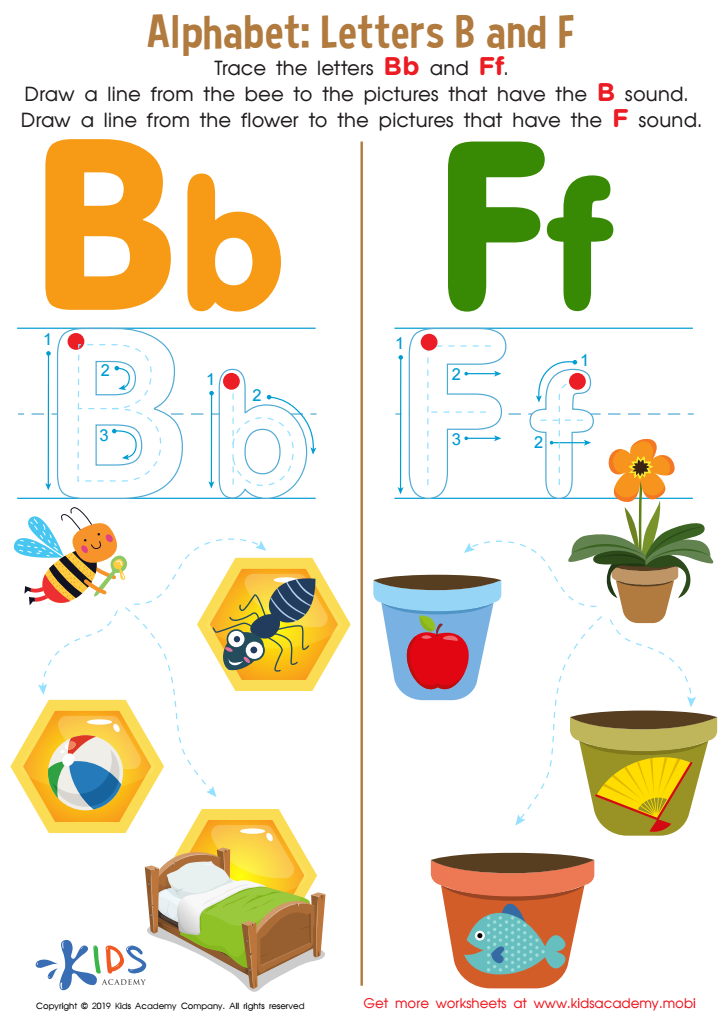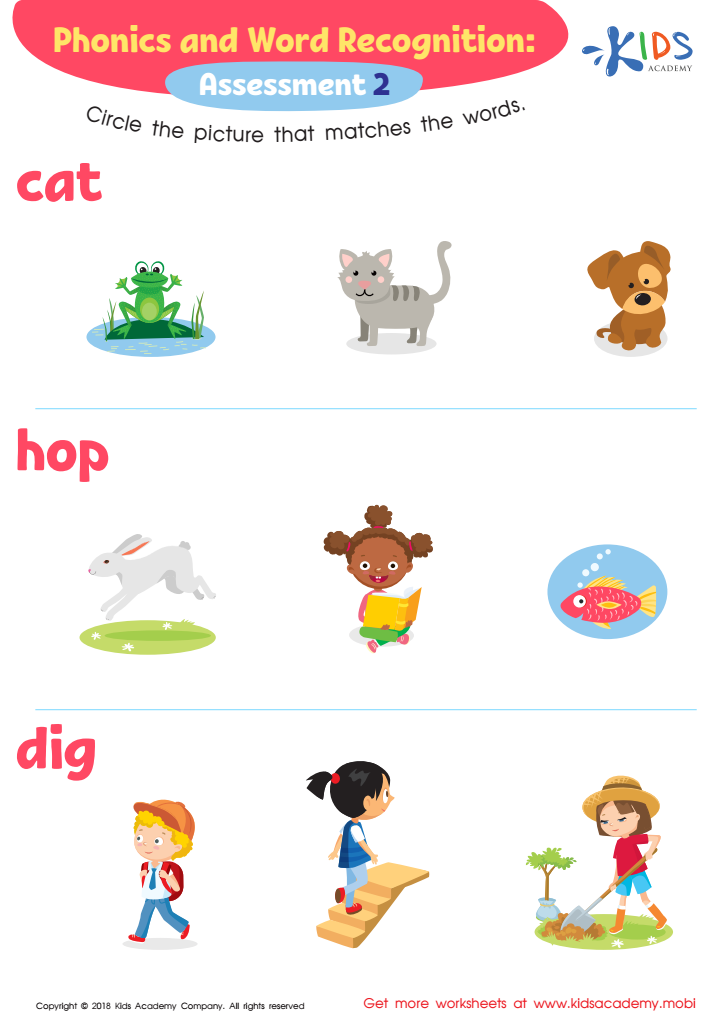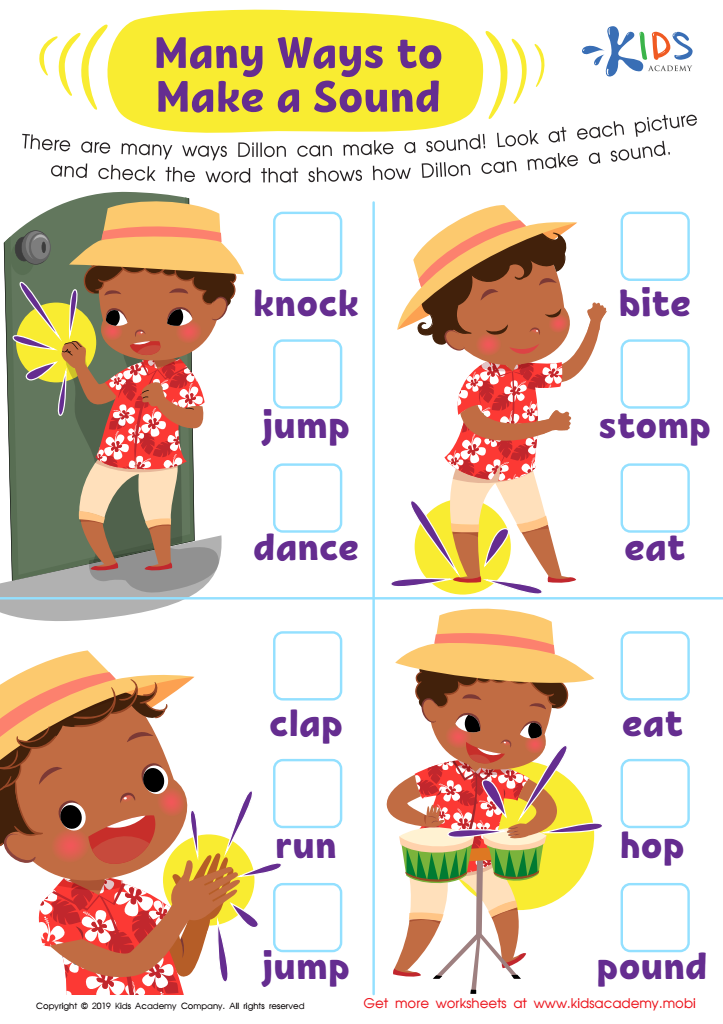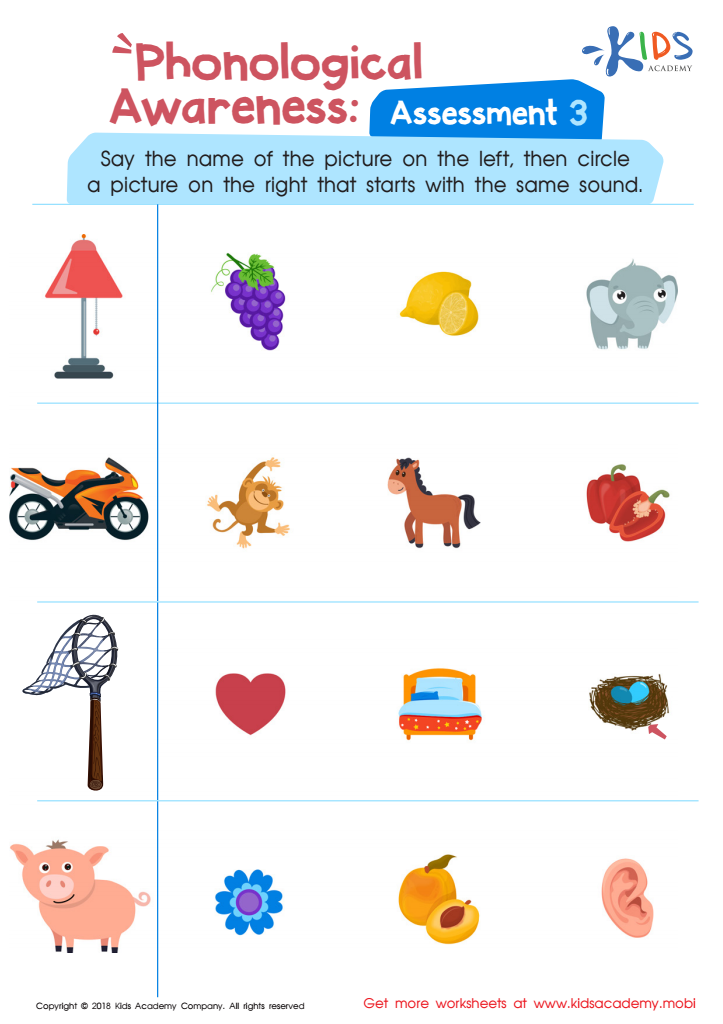Sound identification Alphabet Worksheets for Ages 3-9
5 filtered results
-
From - To
Explore our engaging Sound Identification Alphabet Worksheets designed for children ages 3-9! These interactive worksheets are perfect for young learners to develop their phonemic awareness and improve their reading skills. Each worksheet focuses on helping kids identify sounds associated with different letters of the alphabet through enjoyable activities and vibrant illustrations. Designed to be both educational and fun, these resources support early literacy development, ensuring children can recognize, articulate, and distinguish sounds effectively. Ideal for home or school use, our worksheets make learning an exciting adventure that fosters a lifelong love for reading. Start your child's literacy journey today!


Letters B and F Tracing Worksheet


Phonological Awareness: Assessment 2 ELA Worksheet


Many Ways to Make a Sound Worksheet


Phonological Awareness: Assessment 2 Worksheet


Phonological Awareness: Assessment 3 Worksheet
Sound identification and the alphabet are fundamental building blocks for early literacy, making them crucial for parents and teachers of children aged 3-9. Mastering sound identification helps children recognize the connection between letters and their respective sounds, which is essential for reading and writing. This phonemic awareness is the foundation of decoding words and contributes to fluent reading skills.
Understanding speech sounds enables children to notice and manipulate sounds in words, enhancing their vocabulary and comprehension. When children can identify sounds, they become more adept at sounding out words, which builds confidence and fosters a love for reading.
Moreover, a strong grasp of sound identification supports development across various subjects. It helps improve critical thinking skills, as children learn to analyze and break down language components.
Parents and teachers can create a positive learning environment by incorporating sound identification into playful activities, making learning enjoyable and engaging. This approach nurtures curiosity and enthusiasm, setting the stage for continued academic success.
In summary, prioritizing sound identification in early education equips children with essential literacy skills, allowing them to communicate effectively and develop a lifelong passion for reading. It is an investment in their cognitive, social, and emotional growth.

 Assign to My Students
Assign to My Students



















